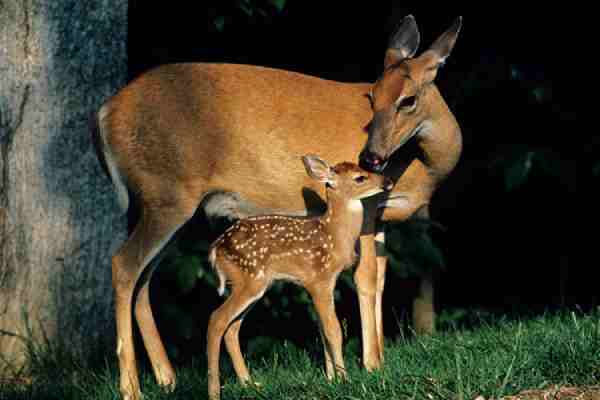As the popularity of plant-based diets continues to rise, it is important to acknowledge the wide range of animals that already consume large quantities of plants every day. These creatures, known as herbivores, come in all shapes and sizes, with some of the largest animals in the world falling under this category.
Table of Contents
From elephants to giraffes, these magnificent creatures have adapted their bodies to be able to graze on grass and leaves in order to fulfil their appetites. But despite their size, these herbivores have much to teach us about consuming a plant-based diet.
So if you’re curious about the top 10 animals that eat plants, get ready to dive headfirst into a fascinating world of powerful creatures and incredible adaptations.
Why Do Animals Eat Plants?
Nature has evolved herbivores to be creatures that mostly consume green matter. These animals have developed the ability to digest cellulose, which is present in plant cell walls and is indigestible to most other living beings. Why has nature made this adaptation necessary?
Perhaps the answer lies in the fact that herbivores prefer food that is easily accessible and requires less effort to obtain. This preference can be attributed to the fact that catching prey consumes a lot of energy, which herbivores are keen to conserve.
Additionally, if there were no herbivores to consume the vegetation, it is easy to imagine how the world would be overrun with uncontrollable plant growth, which could lead to ecological disaster. It’s reasonable to argue that nature’s decision to evolve herbivores as green matter consumers were not just an adaptation but also a necessity to balance the ecosystem.
How Do Herbivores Digest Their Food?
The complexity of a herbivore’s digestive system may come as a surprise to many individuals who assume that they are similar to that of a carnivore. However, certain plant-eating animals such as camels, giraffes, and deers, possess unique digestive systems with more than one stomach cavity and an extended digestive tract.
These animals are equipped with large flat teeth that can grind and effectively break down the cellulose cell walls of plant cells. In addition to this, herbivores also have special fluids and bacteria in their stomachs that aid in the digestion process. Given the unique structure of their stomachs, herbivores have adapted advanced techniques to break down the complex vegetation and extract maximum nutrients from their food.
Top 10 Animals That Eat Plants In The World
As a biologist, I have always been fascinated by plant-eating animals, which represent a vast and diverse group of species. From the majestic elephant to the tiny rabbit, these animals have evolved unique adaptations to extract the nutrients they need from the plants they eat.
Plant-eating animals are not only captivating to study, but they also play a crucial role in the ecosystem, helping to maintain the balance between plants and animals. Whether you are interested in the behaviour of primates, the anatomy of grazing animals, or the symbiotic relationships between insects and plants, there is no doubt that the world of herbivores is full of fascinating facts and insights waiting to be discovered.
1. Cow
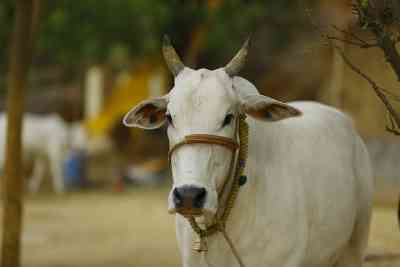
Cows, a type of domesticated animal, can be found all over the world. They are highly beneficial to humans and are commonly used in farming. We derive various products from cows such as meat, milk, and leather.
These large domestic creatures display a variety of colours including white, brown, and black. They can weigh up to 2000 pounds, which is comparable to the weight of a small car! The distinctive feature of cows is the presence of two horns on their heads, setting them apart from other types of cattle.
The physical structure of cows clearly indicates their herbivorous nature. Their broad mouths and strong, flat teeth enable them to graze on grass and chew tough plant species effectively.
If you have ever been to rural areas, you might have observed cows constantly chewing on something, with their mouths moving in circular motions. This behaviour is mainly due to their unique digestive system. Cows are ruminants, possessing a stomach divided into four chambers.
Food is constantly brought back and forth within their stomachs, allowing them to chew it repeatedly until it reaches the final chamber. As a result, cows can consume large quantities of grass while grazing without any worries about digestion, as their stomachs efficiently handle the process.
2. Goat

Goats are plump herbivorous animals with horns and divided hooves. They can be domesticated and kept on farms for the purpose of obtaining meat and milk. However, certain species of goats are naturally found in mountainous regions characterized by rough and rocky terrains.
Thanks to their slender bodies, divided hooves, and muscular strength, goats possess the ability to effortlessly navigate steep mountainous areas. They often spend their time in herds, grazing on grass and vegetation as their primary source of food. While they have a preference for grazing on grass, mountain goats also consume larger plants and mosses.
Goats have large lips that aid them in grasping and pulling food into their mouths. Additionally, their upper jaw is wider than their lower jaw, enabling them to chew food in circular motions from the sides of their mouths. Similar to other grazing animals like cattle, goats possess a four-chambered stomach capable of holding substantial amounts of food. They can quickly ingest large volumes of food. Digestion of their food takes approximately 15 hours to complete.
3. Deer

Deer, a highly evolved species, have undergone numerous adaptations in response to competitive environments. One of their most remarkable features is their large and specialized horns called antlers, which serve as a defence mechanism against predators by allowing them to counterattack. This unique attribute sets them apart as herbivorous creatures in the wild.
There exist several species of deer on our planet, each of them a fascinating creation of nature. They exhibit a wide range of coat colours, varying from brown to grey, and have short tails.
Deer are herbivores with specialized bodily systems that facilitate efficient feeding and digestion of plant matter. Their mobile lips and specialized teeth assist them in plucking and consuming food, which then enters their four-chambered stomach.
These ruminant animals tend to be quite selective about their diet. Their antlers shed and regrow annually, requiring a diverse array of nutrients to support the growth process. Consequently, they naturally gravitate towards consuming high-quality food that is rich in essential nutrients necessary for antler development.
4. Horse
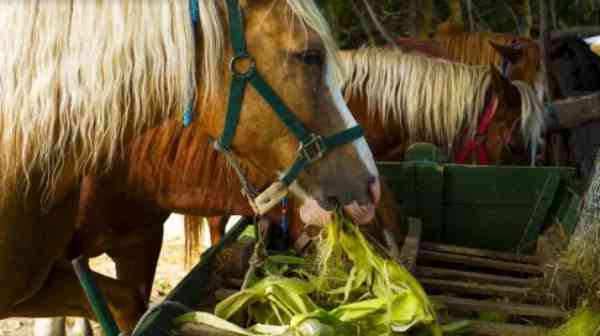
The horses we encounter on a daily basis are domesticated creatures that trace their lineage back to ancient wild horses, which are now considered extinct. Throughout history, horses have been immensely valuable to humans, serving as a primary means of transportation in ancient times and as racing animals for entertainment purposes.
Horses have proven to be exceptional companions to humans, displaying the ability to show affection and form strong bonds with their counterparts. They exhibit a wide array of beautiful coat colours, ranging from white to chestnut brown, and from gold to black. Furthermore, their robust and muscular bodies make them swift runners.
Being herbivores, horses have adapted to a diet consisting primarily of grass. Their large and flat frontal teeth enable them to pull grass from the ground, while their molars and premolars aid in chewing.
However, the digestive system of horses differs from that of typical herbivores. Despite their large bodies, they possess relatively small stomachs, which means they are accustomed to consuming smaller yet frequent meals throughout the day.
5. Gorilla
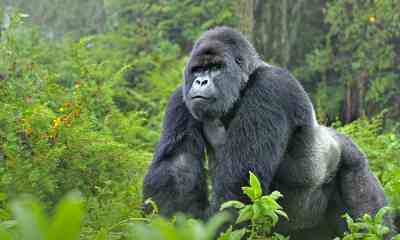
If you have ever watched the famous Hollywood movie “King Kong,” you may already have an idea of what a gorilla is. These enormous apes are indigenous to both mountainous regions and lowlands in Africa.
An astonishing fact is that gorillas are one of the animals that share a close genetic relationship with human beings. These majestic creatures possess immense strength, characterized by their large, hairy bodies and protruding abdomens. One of the most distinctive features of their appearance is their prominent, round nostrils.
Gorillas primarily move by walking on all fours, with a significant amount of their weight supported by their knuckles during locomotion.
Interestingly, gorillas have an aversion to water and often go for days without drinking it. Instead, they obtain hydration through the consumption of moist food or the morning dew.
As herbivorous beings, gorillas primarily feed on green vegetation such as leaves and tree stems. Some Western gorilla species also include fruits in their diet. However, it is worth noting that gorillas occasionally consume small mammals and insects as well.
6. Zebra
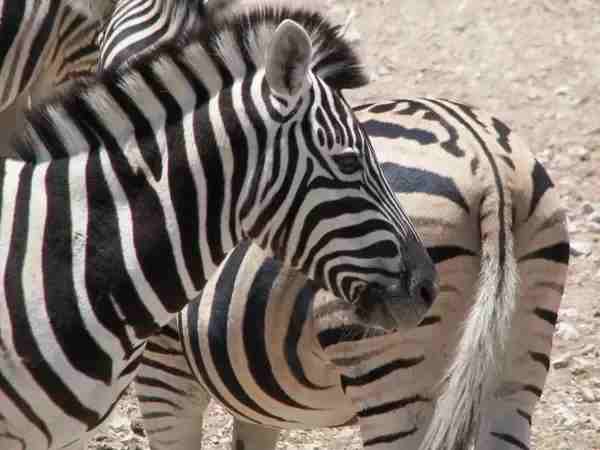
Zebras, with their mesmerizing black and white striped coats, are among the most captivating creatures in the wild. These animals are native to the grasslands and woodlands of Africa and share a close kinship with horses and donkeys.
The unique stripes adorning their bodies serve a similar purpose to human fingerprints, allowing scientists to easily distinguish between different zebra species.
Zebras possess a remarkable digestive system that is adept at extracting proteins and other essential nutrients from even the toughest grass. This adaptation enables them to thrive even in periods of low vegetation quantity and quality. They have no preference for food quality, as their herbivorous nature allows them to survive well in dry conditions.
To take advantage of their rapid digestion, zebras do not retain food in their stomachs and intestines for long periods. As a result, they need to consume a significant amount of food to ensure they receive sufficient nutrients and sustenance for their bodies.
7. Panda
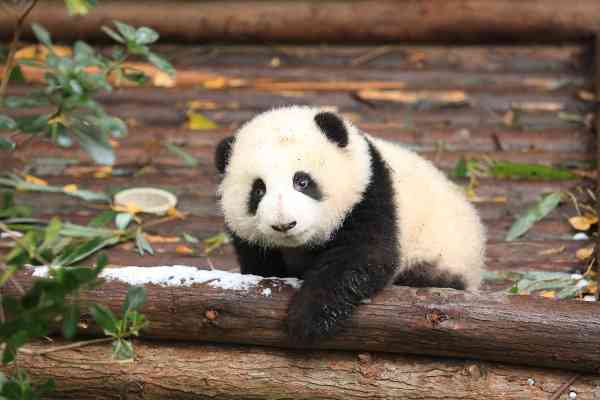
Giant pandas, often regarded as the most adorable creatures on Earth, are closely related to bears. They are native to the bamboo forests of China and were once on the brink of extinction before conservation efforts helped protect their population.
Pandas are famous for their striking black and white fur pattern, which serves the dual purpose of camouflage and attracting potential mates.
One of the reasons we find pandas so endearing is because they spend most of their time eating and sleeping, a relatable trait for many humans!
These charming beings rely heavily on bamboo for their survival and well-being. They dedicate approximately 12 hours each day to devouring bamboo. With their large paws, they grip the bamboo stalks while their sharp teeth aid in stripping away the tough outer layer. Their powerful jaws then assist in chewing the inner part of the bamboo stalk. Additionally, pandas have a preference for bamboo leaves, which they strip off branches and consume in abundance.
However, bamboo is not the sole component of a giant panda’s diet. They opportunistically consume other food sources as well, including fruits, small insects, and occasionally even rodents.
8. Elephant
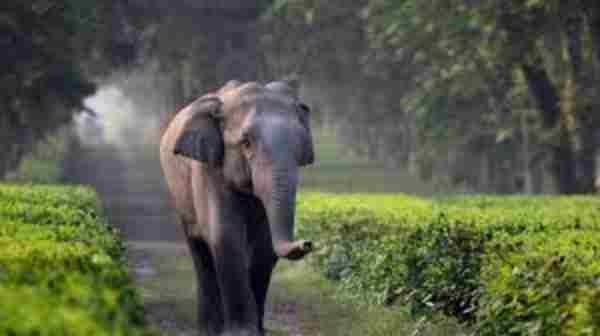
Elephants, the largest land animals, possess unique anatomical features and exhibit complex behaviours. These magnificent creatures can be found inhabiting forests and savannas in both Asia and Africa.
The African bush elephant takes the crown as the largest terrestrial animal, weighing over 9 tonnes!
Elephants have a distinctive physical appearance, characterized by their massive prehensile trunks, enormous ears, and thick ivory tusks. The trunk of an elephant serves as a versatile tool, assisting them in various activities such as eating, drinking, breathing, and carrying objects. Using their trunks, elephants pluck leaves and fruits from trees, bringing the food to their mouths.
Despite their massive size, elephants rely on plant matter for nourishment, consuming over 350 pounds of vegetation every day. They are primarily herbivores, grazing on grass when they are unable to find suitable plants and fruits to eat.
9. Kangaroo
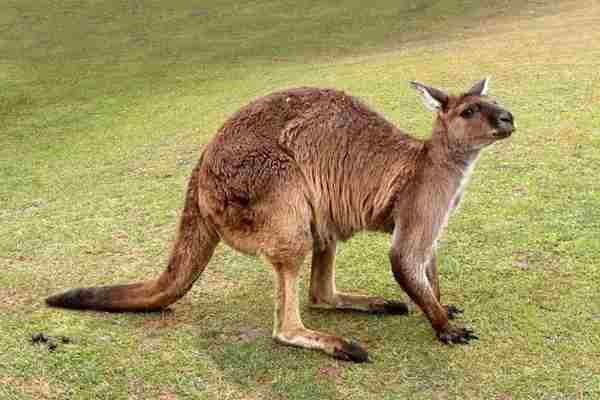
Kangaroos, a fascinating species of the wild, are renowned for their unique hopping behaviour. There are currently 14 different species of kangaroos that are native to the woodlands of Australia.
The anatomy of a kangaroo is highly distinctive, with its long hind legs serving as the primary means of propulsion through hopping. Their thick and elongated tails play a crucial role in maintaining balance during these energetic leaps.
These captivating creatures possess relatively small forelimbs, resembling human arms. Furthermore, female kangaroos have a pouch on their abdomens, which houses mammary glands to nourish and shelter their young joeys until they are mature enough to venture out on their own. It’s worth noting that female kangaroos can give birth to up to four joeys at a time, although such occurrences are rare. The sight of these little ones nestled inside their mother’s pouch is truly adorable!
As herbivores, kangaroos rely predominantly on grass, flowers, and plants to satisfy their appetite. However, they may occasionally consume moss and even insects.
Their digestive system bears resemblance to that of cattle, with their four-chambered stomachs ensuring thorough digestion of the food they consume and optimal assimilation of nutrients into their bodies. Additionally, their well-designed dental structure ensures that their food is properly ground before it progresses to the stomach.
10. Koala Bear

Koalas, captivating creatures of Australian wildlife, share a similarity with kangaroos in carrying their offspring in pouches on their abdomens.
With their fluffy appearance reminiscent of sheep, koalas possess sharp claws and toe pads that aid them in effortless tree-climbing.
They are known for their leisurely lifestyle, spending most of their day eating and sleeping. Their sustenance and shelter depend entirely on eucalyptus trees, where they reside and feed on eucalyptus leaves.
Despite the toxic nature of eucalyptus leaves, the digestive system of koalas has adapted to efficiently remove harmful toxins from their bodies, allowing them to absorb the nutrient content. However, due to the relatively low nutrient intake, koalas often exhibit a lethargic and drowsy demeanour throughout the day.
Regrettably, the constant poaching of koalas for their fur has resulted in a significant decline in their population. The southern population of koalas, in particular, is nearing the brink of extinction.
Bonus Animal! The Giraffe
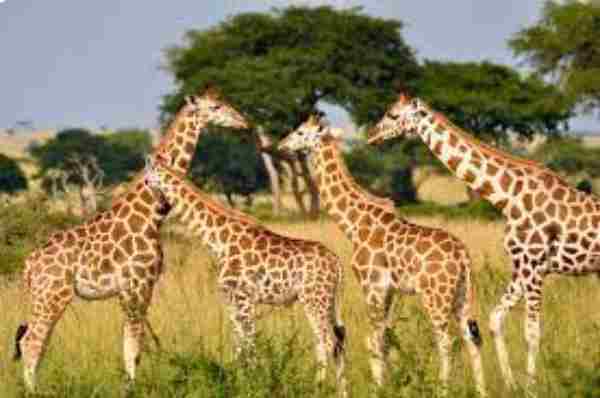
Giraffes, the most captivating wild species in Africa, hold the title of being the tallest mammals on the planet. Their long legs and necks tower over the average height of an adult human!
These endearing creatures boast a unique and stunning coat pattern adorned with irregular blocks, ranging from chestnut brown to dark brown. The rest of their skin exhibits a light yellow hue, providing them with impeccable camouflage amidst the tall trees of the woodlands.
As herbivores, giraffes rely on consuming leaves and fruits from the upper branches of tall trees, capitalizing on their ability to reach heights unmatched by any other mammal. Their towering stature necessitates a substantial daily food intake, estimated to be around 75 pounds!
Additionally, a giraffe’s tongue is remarkably dexterous, akin to an elephant’s trunk or a monkey’s tail. This specialized appendage assists them in grasping and pulling food into their mouths with ease.
Final Words
Our ecosystem is a delicate balance of various living organisms, and animals play a pivotal role in maintaining this equilibrium. Herbivores, like deer, rabbits, and cows, feed on various plant species and help control the amount of greenery in the world.
On the other hand, carnivores, like lions, tigers, and wolves, are necessary to ensure that herbivores don’t exhaust the earth of its natural green beauty.
From the tiniest of insects to the gigantic elephants, each animal has its place in sustaining the ecosystem. Therefore, it becomes our responsibility to conserve wildlife and make the world a haven for them.
Reference:
- https://byjus.com/question-answer/animals-who-eat-only-plants-are-known-as-carnivoresherbivoresomnivoresscavengers/
- https://www.dentalone-md.com/locations/oxon-hill/carnivores-omnivores-and-herbivores-their-differences-and-roles-in-the-food-chain
- https://nhpbs.org/wild/herbivores.asp

Rahul M Suresh
Visiting the Zoo can be an exciting and educational experience for all involved. As a guide, I have the privilege of helping students and visitors alike to appreciate these animals in their natural habitat as well as introducing them to the various aspects of zoo life. I provide detailed information about the individual animals and their habitats, giving visitors an opportunity to understand each one more fully and appreciate them in a more intimate way.

